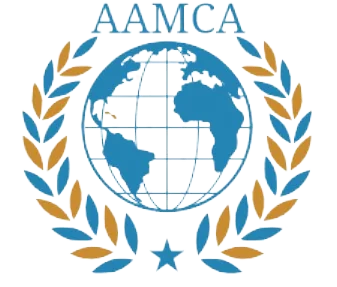Commemorating the Victims of the Genocide
Commemoration plays a vital role in acknowledging the immense loss experienced during the 1994 genocide against the Tutsi in Rwanda. It serves not only as an act of remembrance but also as a crucial moment for collective mourning and reflection. The horrors endured by the victims highlight a significant human rights catastrophe, and honoring those who lost their lives is essential to ensuring that their stories are not forgotten. This remembrance is a communal act, reminding society of the responsibilities it holds to stand against such atrocities.
Events and memorials dedicated to the victims evoke a sense of unity, calling upon citizens, both locally and globally, to reflect on the underlying causes that led to the genocide. Understanding the socio-political contexts that allowed these crimes to transpire is pivotal. It enables societies to learn from the past and fosters a culture that prioritizes human rights and dignity for all individuals. Each act of remembrance reinforces the commitment to prevent future atrocities, by acknowledging the failures that permitted the genocide to unfold in Rwanda.
Moreover, commemorating the victims creates a platform for survivors to share their stories, ensuring their voices are an integral part of the historical narrative. This engagement not only honors the memory of those lost but also empowers survivors to be advocates for change. The process of remembrance directly contributes to building resilience and promoting peace, thus helping societies emerge stronger and more unified. Consequently, as we honor the victims of the genocide, we affirm our collective responsibility to uphold human rights, cultivate empathy, and foster a culture that decisively rejects violence and hatred.
Understanding the Mechanisms of Hate
The 1994 Rwanda genocide serves as a harrowing reminder of how deep-seated hatred can manifest into catastrophic violence. This tragic event was not a spontaneous eruption but rather the culmination of years of premeditated actions, fueled by hate speech and propaganda. The Rwandan government and influential media outlets played pivotal roles in constructing societal divisions, which ultimately led to the violent extermination of the Tutsi population. It is essential to understand that such mechanisms of hate are often intricately woven into the fabric of society.
In the years leading up to the genocide, a systematic campaign was launched to dehumanize the Tutsi minority, portraying them as enemies of the state and threats to Hutu identity. This campaign was characterized by inflammatory rhetoric and aggressive media messaging that permeated daily life. Radio broadcasts, in particular, were instrumental in escalating divisions and inciting violence, illustrating how media can be weaponized to serve political agendas. As society became enmeshed in a culture of fear and animosity, the groundwork for violence was laid meticulously and methodically.
The repercussions of these actions extend far beyond the immediate horror of the genocide. The aftermath revealed how deeply ingrained animosities can persist for generations, with survivors and subsequent societies grappling with the trauma and loss. This historical context underscores the necessity of acknowledging contemporary parallels, as rising divisiveness and intolerance are hallmarks of modern discourse in many countries. Just as rhetoric once fueled the flames of hatred in Rwanda, similar patterns can be observed today, where dehumanizing narratives threaten to fracture societies worldwide.
Reflecting on the mechanics of hate not only honors the memory of those lost but also highlights the urgent need for vigilance against the proliferation of rhetoric that fosters division. Understanding this history provides critical insights for preventing future atrocities and ensuring that human rights are upheld universally.
The Modern Challenge of Hate Speech and Division
In today’s interconnected world, the proliferation of digital technologies has transformed communication, but it has also given rise to significant challenges concerning hate speech and societal division. Social media platforms serve as powerful conduits for the expression and dissemination of various ideologies, including those that perpetuate racism, misogyny, and other forms of discrimination. These platforms, while fostering connectivity, inadvertently facilitate the spread of harmful narratives and misinformation that can incite violence and division among communities.
Recent trends reveal an alarming escalation in hate speech online, often targeted at marginalized groups. Algorithms that prioritize engagement may inadvertently propagate divisive content, creating echo chambers that reinforce prejudicial beliefs. The rapid spread of misinformation surrounding critical issues, including race relations and gender equality, amplifies societal tensions and undermines public discourse. As such, there is a pressing need for individuals and institutions to take a stand against the misuse of digital platforms that promote such narratives.
The Global Digital Compact proposes essential guidelines that aim to address these pressing issues. It underscores the necessity for collaborative efforts among governments, tech companies, and civil society to establish ethical standards and frameworks capable of combating online hate speech effectively. There is a shared responsibility to ensure that digital space remains a safe medium for communication, free from harmful rhetoric that can escalate into real-world violence and discrimination.
As individuals navigate the complexities of the digital world, it is imperative to engage critically with the information consumed and shared. By promoting digital literacy and responsible intervention, society can collectively challenge the prevalence of hate speech and work towards fostering an inclusive environment that respects and upholds human rights for all. This endeavor requires commitment and action from every segment of society, emphasizing a unified stand against division and intolerance.
A Call to Action for Global Responsibility
The 1994 Rwanda genocide stands as a stark reminder of the devastating consequences that ensue when the international community neglects its responsibility to protect those who are most vulnerable. In the aftermath of such atrocities, it becomes imperative for nations and societies to reflect upon their collective obligations to uphold human rights, as articulated in various international laws and conventions. The Universal Declaration of Human Rights and the Genocide Convention outline fundamental principles that commit states to prevent violence and protect human dignity.
It is essential for countries to actively participate in the Genocide Convention and demonstrate their commitment through concrete actions that prioritize the prevention of genocide and other forms of mass violence. Investments in human rights advocacy are crucial in fostering an environment where dignity and equality are recognized and respected for all individuals, irrespective of their background. This involves not only legislative measures but also the promotion of educational programs aimed at raising awareness and combating prejudices that often precipitate acts of violence.
Furthermore, a renewed dedication to the principles established by the United Nations is required to ensure that the horrors of the past are not repeated. Nations must work collaboratively to develop strategies that address the root causes of conflict, thereby fortifying peace and security across the globe. Global responsibility is not merely a theoretical concept; it demands practical engagement from all sectors of society, including governments, non-governmental organizations, and local communities. Together, they can create a formidable coalition against injustices that threaten human rights. As history continues to unfold, our shared commitment to safeguard humanity must remain unwavering, reminding us that the protection of human rights is indeed a collective responsibility that must be acted upon with urgency and compassion.




